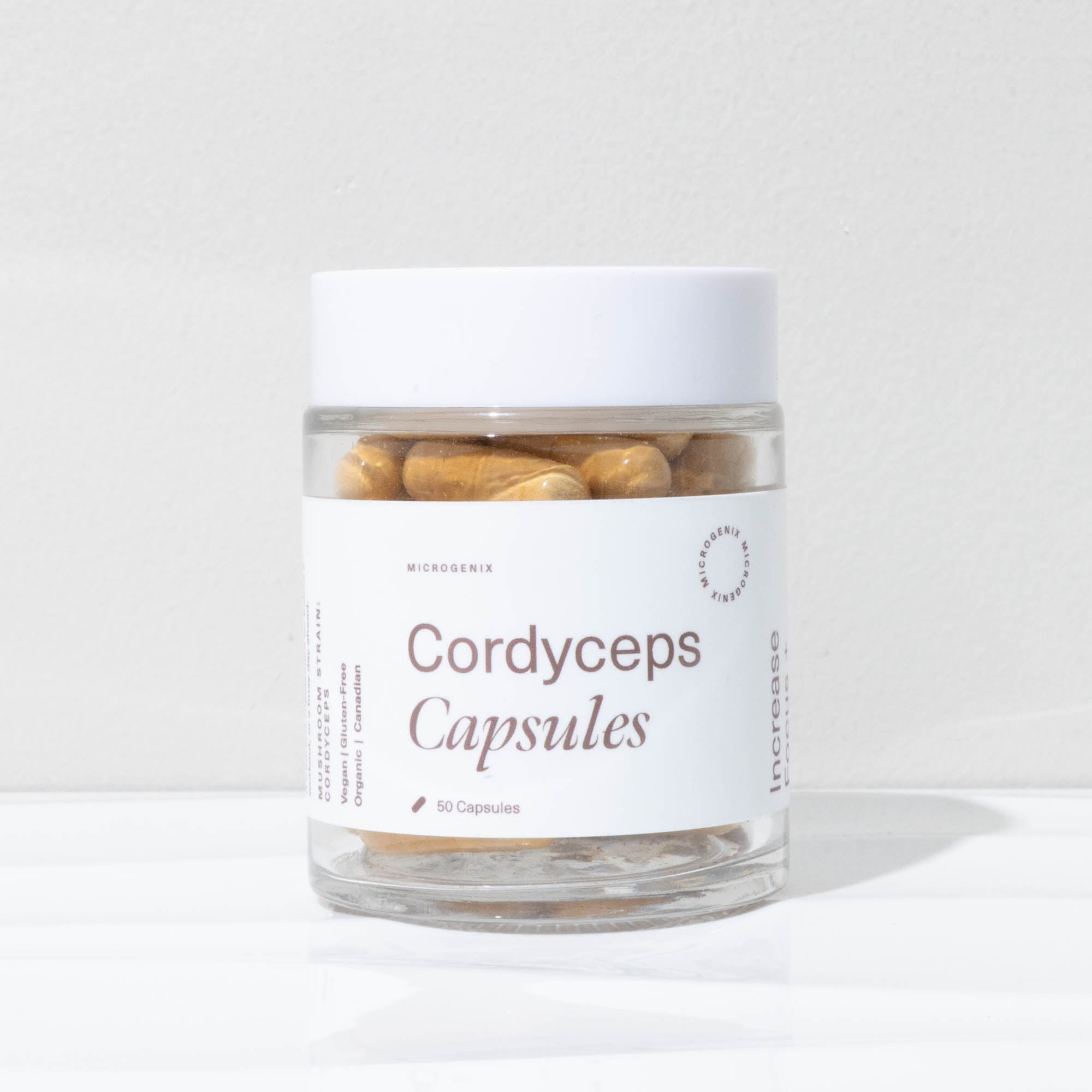Blog
The Last of M(us)h: The Truth Behind Cordyceps
If you are anything like the rest of us, you may have found yourself particularly captivated by the hit series “The Last of Us” in recent weeks.
Part of the sheer captivation involved with the shows’ inherent success, in a wince-worthy plotline, is fixed around a mutated strain of fungus that grossly invades its host with a lethal brain infection. This egregious infection takes on brutal progression stages from loss of humanity to visual corruption, leaving the host’s body in an infectious state of protruding fungal matter.
Thankfully this is only television, and surely a fungus like this could not exist in real life…Right?
Think again…
Real Life Fungi
Ophiocordyceps Unilateralis, otherwise known as zombie-ant fungus, is a genus of fungi most central to tropical rainforests in Thailand and Brazil. It is very much a real thing! The unique parasitic fungus is infectious in real life as well, and has the ability to manipulate the behavior of their victim solely for their own benefit. The fascinating efforts conducted by the fungi has caused Ophiocordyceps Unilateralis to be among the most well-studied genuses of fungi to date, bringing us the incredibly strange yet enthralling knowledge we have of it today, even landing it its own hit TV show.
Fortunately, the Ophiocordyceps only seems to have one guaranteed victim: Ants. Infecting ants of the Camponotini tribe, the invasive fungus attaches its spores to the ant’s exoskeleton which then goes on to penetrate the ant’s body. Once attached, the fungus spreads, producing chemicals that begin to manipulate the ant’s demeanor. The manipulation is so prominent that it can compel an ant to climb to a certain height of a tree, bite onto a leaf or twig, and die. Similar to The Last of Us, once the host (the ant in this case) has died, the fungus goes on to project from the ant’s exterior, releasing spores to infect other ants with.
The grueling infection to ensue in The Last of Us would be inspired by a real episode of the BBC documentary Planet Earth, which gave creators the triumphant idea of using a real life fungus to structure a make-believe contagion on humans.
We understand that it is the fear and repulse factor of the hit show that leaves fans itching for more, but in real life, ingesting the nootropic cordyceps (militaris) brings on a much different outcome with zero infective activity involved. In fact, the benefits of this cultivated fungus might leave you with an itch to get some in your system asap. Talk about a change in pace!
The Benefits of Cordyceps
Cordyceps (militaris) is yet another medicinal mushroom long-used in traditional Chinese medicine, and is known to possess a variety of unique health benefits. Research claims that users can begin to feel the benefits of cordyceps in as little as one week, as it assists in lowering fatigue and boosting energy.
Unlike in The Last of Us, taking a dose of this cordyceps type on a regular basis can help humans improve their wellbeing from cardiovascular health all the way to boosting libido. Cordyceps has become increasingly popular amongst athletes in particular, as it has been shown to improve an individual’s oxygen intake and delivery. A 2018 study published in the Journal of Dietary Supplements examined the effects of cordyceps on exercise performance in young adults, and saw significant improvements in those who used cordyceps, in comparison to those who were given a placebo. Researchers also found that the cordyceps group showed significantly lower levels of muscle damage, implying that cordyceps can also aid in muscle recovery.
Carrying on with the anti-zombifying effects of the good cordyceps is their notably unique benefit on an important human function: libido. In its history of traditional use, cordyceps has been known to work as an effective aphrodisiac and can improve erectile dysfunction. Cordyceps has a positive impact on blood flow and testosterone levels, enhancing sexual function and desire in little time. Stamina included!
We know that the contagious fungus surrounding The Last of Us is nothing but a barbaric infection you must run from, but in reality, many take the nootropic cordyceps as a way to fight serious infections. Cordyceps has actually been shown to boost the activity of natural killer cells, whose role is to defend the human body against pathogens, infections, and even cancer. Cordyceps has displayed immunomodulatory effects, regulating the immune system and protecting the body from viruses while enhancing our ability to fight them.
The creepiest and also most fascinating aspect of the real life zombie-ant species, is that the bad cordyceps have the ability to manipulate the ant’s behavior into doing what the fungus needs it to do in order to flourish. When it comes to the cordyceps species we use for medicinal purposes, we can actually use it for our own flourishing mental benefit.The use of cordyceps has been shown to carry anti-inflammatory and antioxidant properties, which help protect the brain from oxidative stress. Oxidative stress limits the body’s ability to repair the damage caused by free radicals, which can be caused by things such as alcohol consumption, smoking and/or vaping, processed foods, and more. Oxidative stress has been linked to common mental health disorders such as depression and anxiety, which is why cordyceps can be a beneficial supplement for those struggling with mental health issues. Preliminary studies have shown promise in the medicinal mushroom’s abilities to aid in mental health, with one study published in the Journal of Dietary Supplements finding that cordyceps supplement improved symptoms of depression and anxiety in mice.
As we acknowledge the polar opposite differences between a brain gnawing infection and a medicinal powerhouse, you can hopefully reposition your outlook on the mysterious mushroom with ease. The cordyceps genus includes 600 species of fungi, and fortunately even if we were to consume the exact species involved in The Last of Us, our body temperature is simply too high to allow such manipulative bacteria to flourish. So until fungus filled zombies are a thing of reality, your best bet might be getting into tip top shape, with the help of medicinal mushrooms to boost your chances of survival.
Don’t worry about any apocalyptic brain infections, we only got hands on the good stuff here at Microgenix!
Yours,
Olive
Sources:
Sung G-H, Hywel-Jones NL, Sung J-M, et al. Phylogenetic classification of Cordyceps and the clavicipitaceous fungi. Stud Mycol. 2007;57:5-59.
Source: Hughes DP, Andersen SB, Hywel-Jones NL, Himaman W, Billen J, Boomsma JJ. 2011. Behavioral mechanisms and morphological symptoms of zombie ants dying from fungal infection. BMC Ecology 11(1):13.
Andersen SB, Gerritsma S, Yusah KM, Mayntz D, Hywel-Jones NL, Billen J, Boomsma JJ, Hughes DP. 2009. The Life of a Dead Ant: The Expression of an Adaptive Extended Phenotype. The American Naturalist 174(3): 424–433
Jung, E.-S., Park, H.-J., Kim, J.-S., Oh, K.-O., Kim, Y.-H., Lee, M.-S., & Jang, K.-H. (2018). Cordyceps militaris Enhances Exercise Performance and Relieves Fatigue. Journal of Dietary Supplements, 15(5), 655–668.
Zhu, J. S., Halpern, G. M., & Jones, K. (1998). The scientific rediscovery of a precious ancient Chinese herbal regimen: Cordyceps sinensis: Part II. Journal of Alternative and Complementary Medicine, 4(4), 429–457.
Kim, H. G., Shrestha, B., Lim, S. Y., Yoon, D. H., Chang, W. C., Shin, D. J., … & Hwang, K. C. (2019). Cordyceps pruinosa extracts alleviate depression and anxiety-like behaviors via the promotion of hippocampal neurogenesis. Journal of Dietary Supplements, 16(4), 418-429.




